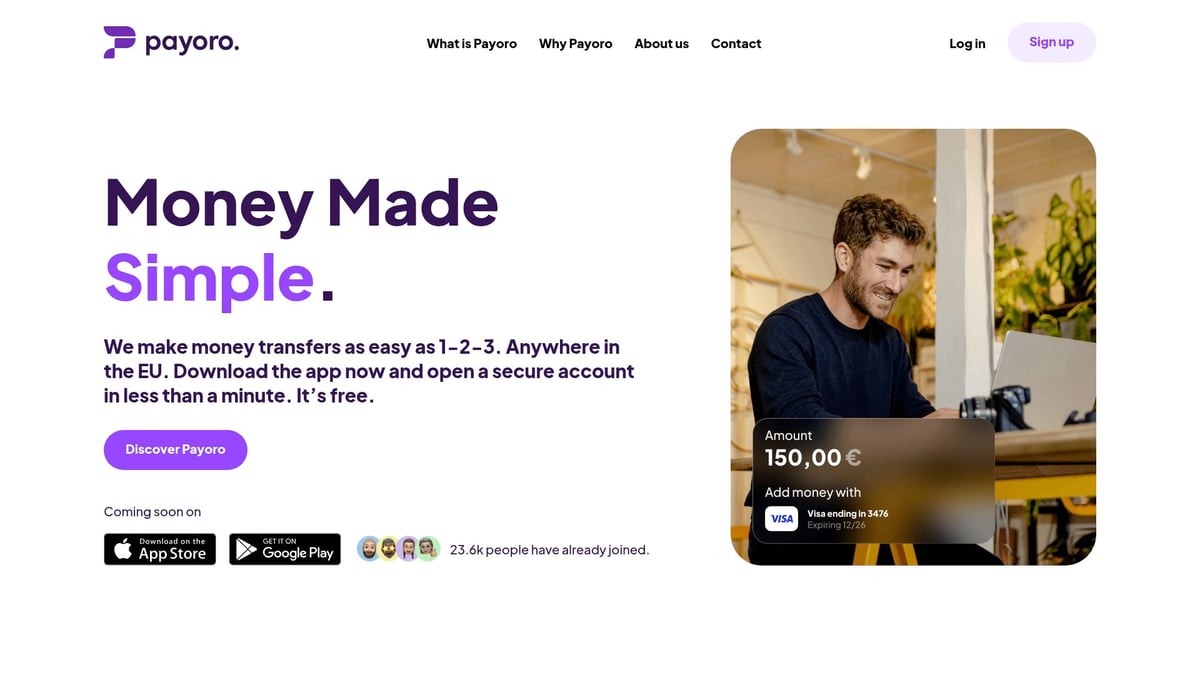Direct Bank Transfer Guide: Your Essential Handbook 2025
Master direct bank transfer in 2025 with our expert guide Explore secure setup steps, benefits, troubleshooting, and future trends for reliable transactions
Published November 16, 2025 — 14 minutes read — Fintech Guides
Written by François Savard
In 2025, the demand for secure, rapid payments has never been higher. Individuals and businesses are turning to direct bank transfer solutions for seamless, reliable transactions in a digital-first world.
This essential handbook will guide you through every aspect of direct bank transfer, from foundational concepts to advanced security tips. Discover what sets these transfers apart, how to set them up, and the best practices for safe, cost-effective payments.
We will explore the basics, step-by-step setup, security strategies, troubleshooting, and the future of direct bank transfer technology. Ready to optimize your payment experience? Let’s get started.
Understanding Direct Bank Transfers: The Basics
Direct bank transfers have become a cornerstone of modern finance for both individuals and businesses. Their growing popularity in 2025 is fueled by advances in speed, security, and international reach.
What is a Direct Bank Transfer?
A direct bank transfer is an electronic movement of funds from one bank account to another, initiated by the sender through their banking provider. Unlike payment cards or e-wallets, a direct bank transfer moves money directly, without intermediaries like card networks. This method stands apart from wire transfers or ACH systems in its immediacy and simplicity.
For example, paying a supplier in the euro area or sending money to a family member across borders can be completed efficiently via a direct bank transfer. According to Payments statistics: second half of 2024, credit transfers remain one of the most widely used non-cash payment methods in Europe, highlighting their real-world significance.
Types of Direct Bank Transfers
There are several types of direct bank transfer, each designed for specific needs:
- Domestic transfers: Move funds within the same country, often processed instantly.
- International transfers: Send money across borders, involving currency exchange and additional information.
- Instant payments: Solutions like SEPA Instant and Faster Payments deliver funds in seconds.
- Scheduled or recurring transfers: Automate regular payments, such as monthly rent or payroll.
- Peer-to-peer (P2P) transfers: Enable individuals to send money directly.
- Business payments: Facilitate supplier settlements, bulk payouts, or large transactions.
Choosing the right type of direct bank transfer depends on speed, cost, and the recipient’s location.
How Direct Bank Transfers Work
The process of a direct bank transfer involves three key players: the sender’s bank, any intermediaries, and the recipient’s bank. The sender initiates the transfer by entering essential details such as the recipient’s IBAN, SWIFT/BIC code, and account name.
Once submitted, the bank authenticates the transaction and routes it through payment networks. Settlement times can vary, with instant options available or, in some cases, processing within one business day. Clearing mechanisms ensure that funds are transferred securely and accurately, making each direct bank transfer both efficient and reliable.
Key Players and Systems in 2025
The ecosystem supporting direct bank transfer in 2025 includes leading traditional banks, innovative fintech platforms, and robust payment networks like SEPA, SWIFT, and Faster Payments. These systems are governed by regulatory bodies, such as the European Central Bank and national financial authorities, which set compliance and security standards.
Fintechs continue to drive innovation by integrating direct bank transfer into user-friendly platforms, while banks focus on enhancing reliability and cross-border capabilities. The collaboration between these players ensures that the direct bank transfer remains a trusted and accessible payment method for all.
Advantages and Challenges of Direct Bank Transfers
As digital payments evolve, understanding the advantages and challenges of a direct bank transfer is essential for both individuals and businesses. This section explores the key benefits, security factors, common limitations, and real-world adoption trends.
Benefits for Individuals and Businesses
A direct bank transfer offers significant cost savings compared to card payments or handling cash. Many banks now provide instant or same-day options, making it possible to move money quickly and reliably. For businesses, this means faster supplier payments and streamlined payroll processes.
Individuals appreciate the global accessibility of a direct bank transfer, especially for sending funds abroad or managing expenses across different countries. With fewer intermediaries, there is often more transparency and control over each transaction.
The flexibility of scheduling one-time or recurring payments further enhances convenience. Whether paying rent, suppliers, or employees, a direct bank transfer is a practical solution for a wide range of needs.
Security and Compliance Factors
Security is a top priority in a direct bank transfer. Banks use strong encryption and multi-factor authentication to protect customer data and funds. Compliance with anti-money laundering (AML) and know-your-customer (KYC) regulations ensures that transactions are monitored for suspicious activity.
For businesses operating in the EU or globally, data privacy remains crucial. Adherence to regulations like GDPR helps safeguard sensitive information during a direct bank transfer. Advanced fraud prevention tools, such as transaction monitoring and real-time alerts, add another layer of security.
Maintaining up-to-date software and using secure platforms are best practices that support a safe and compliant payment environment.
Common Challenges and Limitations
Despite its advantages, a direct bank transfer can face certain challenges. Delays may occur due to cut-off times, bank holidays, or intermediary bank processing. Some transfers, especially international ones, may incur fees or hidden costs that are not immediately apparent.
Exchange rate fluctuations can affect the final amount received when sending money across borders. Understanding the terms and potential charges before initiating a direct bank transfer helps avoid unexpected surprises.
Below is a quick comparison of common challenges:
| Challenge | Description |
|---|---|
| Delays | Processing times can vary |
| Fees | May apply, especially abroad |
| Exchange Rate Risk | Impacts international transfers |
Real-World Use Cases and Statistics
Adoption of the direct bank transfer has surged in recent years, with millions of transactions processed daily for payroll, supplier payments, and personal remittances. For example, in the United States, the ACH network reported record growth, handling nearly 31 billion payments in 2023. This surge highlights the increasing reliance on direct bank transfer solutions for both routine and high-value use cases.
European businesses are leveraging instant payments to improve cash flow and efficiency. According to ACH Network Volume and Value Statistics, the trend towards digital and instant transfers is expected to continue as more organizations prioritize speed and security.
Direct bank transfer adoption is poised for even greater growth as technology and regulations evolve.

Step-by-Step Guide: How to Set Up and Make a Direct Bank Transfer
Setting up and making a direct bank transfer is straightforward when you follow the right steps. Whether you are sending money domestically or internationally, understanding each phase ensures your funds reach the intended recipient quickly and securely. This guide will walk you through the entire process, from preparation to troubleshooting, so you can transfer with confidence.
Preparing for a Direct Bank Transfer
Before you initiate a direct bank transfer, gather all necessary recipient information. This typically includes the International Bank Account Number (IBAN), SWIFT/BIC code, account name, and sometimes the recipient’s address.
Double-check these details for accuracy. Even a small error can delay your transfer or cause it to fail. It is also important to review your bank’s transfer limits and any specific policies that might affect your transaction. Some banks have daily or per-transfer limits, especially for international payments.
By preparing thoroughly, you minimize errors and ensure your direct bank transfer proceeds smoothly.
Initiating a Transfer via Online Banking
Most banks offer user-friendly online platforms where you can initiate a direct bank transfer. Log in to your online banking account and navigate to the transfer or payments section.
Enter the recipient’s details, including the IBAN, SWIFT/BIC, and account name. Take a moment to confirm each field is correct. Many platforms allow you to choose between a single transfer or set up recurring payments for regular transactions.
Online banking systems often provide a summary page before submission. Review the details, authorize the payment, and save the confirmation for your records. This process ensures your direct bank transfer is both secure and efficient.
Using Mobile Banking Apps for Transfers
Mobile banking apps have made the direct bank transfer process more convenient than ever. Open your bank’s app and select the transfer option. Enter the required recipient information, ensuring accuracy at each step.
Most apps now support biometric security, such as fingerprint or facial recognition, to authenticate the transfer. You can also set up push notifications to receive real-time updates on your transaction status.
Mobile apps enable you to monitor the progress of your direct bank transfer from anywhere, providing flexibility and peace of mind.
International Transfers: What to Know
When making a direct bank transfer to another country, you will need additional information. Alongside the standard account details, specify the currency and, in some cases, intermediary bank information.
Be aware of exchange rates and all associated fees. Many banks display a breakdown of costs upfront, but it is wise to ask for full transparency. International transfers are subject to cross-border regulations, so ensure your documentation complies with local and international requirements.
Understanding these factors helps you avoid unexpected charges and ensures your direct bank transfer arrives as intended.
Troubleshooting Failed or Delayed Transfers
Occasionally, a direct bank transfer may fail or be delayed. Common reasons include incorrect recipient details, bank holidays, or exceeding your transfer limit. If your transfer does not arrive on time, start by checking your transaction status through your bank’s tracking tools.
If the issue persists, contact your bank’s customer support for further assistance. Provide all relevant information, such as the transfer reference number and recipient details. If necessary, escalate the matter following your bank’s complaint process.
Proactive troubleshooting ensures your direct bank transfer issues are resolved swiftly.
Tips for Fast and Secure Transfers
To maximize speed, use instant payment services when available, such as SEPA Instant or Faster Payments. These options can make your direct bank transfer nearly instantaneous.
Try to avoid sending transfers during peak banking hours or right before cut-off times. Set up transaction alerts to monitor your account in real time. Regularly reviewing your account and using two-factor authentication adds another layer of security.
Following these tips helps you complete each direct bank transfer quickly and safely.
Payoro: Seamless Direct Bank Transfers Across the EU
Payoro offers a user-friendly platform designed for seamless direct bank transfers across the EU. With instant account setup and broad e-ID support, individuals and businesses can start transferring funds right away.

The platform unifies fiat and crypto transfers, enabling users to manage both in a single app. Real-time, 24/7 transactions with high acceptance rates ensure your direct bank transfer is completed without delays. Payoro provides robust security, strict compliance, and round-the-clock support.
For example, many EU businesses use Payoro to streamline payroll and supplier payments, enjoying a simplified and efficient direct bank transfer experience.
Security, Fraud Prevention, and Compliance in 2025
The landscape for direct bank transfer security is evolving rapidly in 2025. With digital transactions on the rise, robust defenses and compliance protocols are essential for both individuals and businesses. Understanding the latest tools and regulations can help you keep your money and data protected.
Latest Security Protocols and Technologies
Banks and fintech platforms have implemented advanced measures to secure every direct bank transfer. Two-factor authentication (2FA) and biometric verification, such as fingerprint or facial recognition, are now standard features. End-to-end encryption protects sensitive information while real-time fraud detection systems monitor transactions for suspicious activity.
Innovations like blockchain and central bank digital currencies are also shaping secure payment solutions. For example, research on SecurePay: Enabling Secure and Fast Payment Processing for Platform Economy explores how combining blockchain with digital currencies can enhance direct bank transfer security and efficiency. Staying updated on these protocols helps ensure your transfers remain safe.
Regulatory Landscape and Compliance Requirements
Regulatory compliance is at the heart of every secure direct bank transfer. The European Union’s PSD2, GDPR, and anti-money laundering (AML) directives set strict standards for banks and fintechs. These laws require institutions to verify the identity of their users, monitor transactions for suspicious behavior, and safeguard personal data.
Globally, similar regulations are being adopted to ensure consistency and consumer protection. Financial institutions must perform customer due diligence and maintain clear audit trails. For anyone initiating a direct bank transfer, understanding these compliance requirements helps you choose reliable providers and reduces your risk of legal issues.
Protecting Yourself from Scams and Fraud
Scams targeting direct bank transfer users are becoming more sophisticated in 2025. Common threats include phishing emails, spoofed websites, and social engineering tactics that trick you into revealing sensitive information. Always verify recipient details and use only official banking platforms.
To stay protected, never share your login credentials and be wary of unsolicited requests for payment. Set up transaction alerts and review your account activity regularly. Keeping your software and banking apps updated is another key step to prevent unauthorized access during a direct bank transfer.
What to Do if You Suspect Fraud
If you think a direct bank transfer has been compromised, act quickly. Contact your bank immediately to report the issue and request that they freeze your account if necessary. Provide all relevant details so your bank can begin their investigation.
Next, report the incident to authorities and consumer protection agencies as required. Monitor your account for any further suspicious activity. For ongoing updates and insights on security best practices, consult resources like the Fintech news and insights blog to stay informed about the evolving risks and solutions in the world of direct bank transfer.
Future Trends and Innovations in Direct Bank Transfers
Direct bank transfer technology is advancing rapidly, transforming how individuals and businesses move money. As we approach 2025, several key innovations are shaping the future of payments, from instant settlements to seamless integration with digital assets. Understanding these trends helps you stay ahead, ensuring your direct bank transfer experience is efficient and secure.
Rise of Real-Time and Cross-Border Payments
The demand for instant and cross-border direct bank transfer options is at an all-time high. Networks like SEPA Instant and SWIFT gpi are enabling real-time settlements across borders, making global transactions faster and more predictable. Businesses benefit from improved cash flow, while consumers expect instant access to funds regardless of geography.
Projected volumes for instant direct bank transfer transactions are set to reach record levels by 2025, reflecting both business needs and consumer expectations for speed. The shift toward 24/7 processing is eliminating traditional banking cut-off times, providing flexibility for payroll, supplier payouts, and personal remittances. This evolution is making the direct bank transfer a go-to method for international commerce.
Integration with Digital Wallets and Cryptocurrencies
The convergence of direct bank transfer systems with digital wallets and cryptocurrencies is revolutionizing payments. Banks and fintechs are embracing open banking APIs, allowing users to move funds between fiat and crypto seamlessly. This integration supports payroll, supplier payments, and personal transfers in multiple currencies.
Platforms like the Payoro SuperApp for transfers are leading the way, offering unified management for fiat and crypto assets within a single interface. Users benefit from secure, real-time settlements, broad e-ID support, and a simplified experience. As more organizations adopt these solutions, the direct bank transfer will become central for both traditional and digital asset management.
Automation, AI, and Personalization
Artificial intelligence and automation are redefining the direct bank transfer landscape. AI-driven fraud detection systems monitor transactions in real time, flagging suspicious activity and reducing risk. Automation tools streamline reconciliation, making it easier for businesses to match incoming and outgoing payments.
Personalized transfer experiences are emerging, with smart notifications and custom workflows tailored to user behavior. These innovations help individuals and companies save time, reduce errors, and enhance the security of every direct bank transfer. The result is a more intuitive, responsive payment ecosystem.
The Evolving Regulatory and Competitive Landscape
Regulatory changes and increased competition are reshaping the direct bank transfer market. Upcoming EU directives, global compliance standards, and enhanced consumer protections are setting higher expectations for transparency and security. New entrants, including fintechs and neobanks, are challenging traditional banks by offering lower costs and improved user experiences.
International expansion by fintech providers is accelerating, enabling broader access to direct bank transfer services in emerging markets. For example, Payoro’s international fintech expansion demonstrates how providers are pushing boundaries and driving innovation. In this dynamic environment, users can expect more options, better rates, and continued enhancements in service quality.
Now that you have a clear understanding of direct bank transfers—from setup and security to the latest industry innovations—you might be considering how to streamline these processes for your own business or personal finances. Payoro’s platform is designed to help you manage both fiat and crypto transactions with confidence, offering real time transfers, robust security, and seamless integration with your existing systems. If you’re ready to take the next step or have questions about how Payoro can support your unique needs in 2025, I encourage you to Contact sales for expert guidance and tailored solutions.
Share article on

Cross Border Transactions Meaning Guide: Your 2026 Roadmap
Discover the cross border transactions meaning with this 2026 guide. Learn key processes, regulatory updates, and actionable steps...

Payment Automation Guide: Streamline Your Workflow in 2026
Streamline your workflow with payment automation in 2026. Discover key technologies, step by step implementation, integration tips, and...

Improving Accounts Payable Process Guide: Expert Insights 2026
Discover proven strategies for improving accounts payable process in 2026 with expert insights, step by step guidance, and...

QuickBooks Accounts Payable Automation Guide for 2026
Discover how to implement quickbooks accounts payable automation for 2026 with step by step guidance on trends, features,...



